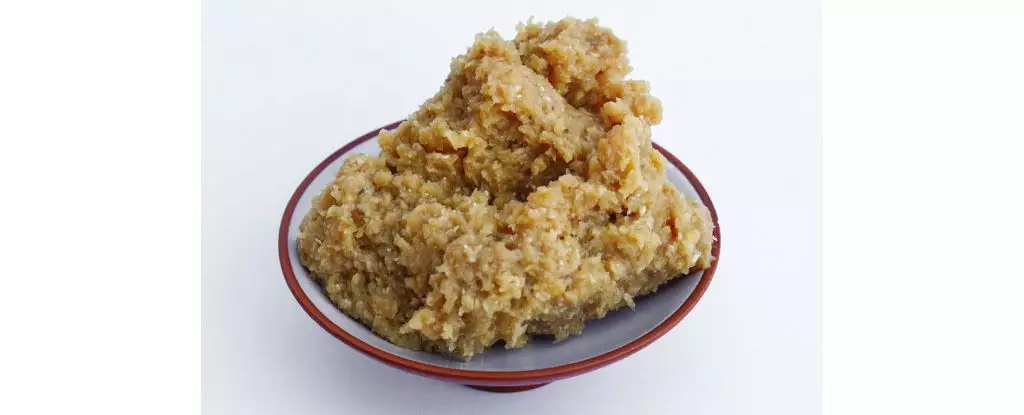

In an extraordinary blend of gastronomy and astrobiology, researchers have achieved what may sound like culinary fiction: fermenting miso in the microgravity environment of the International Space Station (ISS). This groundbreaking experiment revealed that the flavor profile of miso produced in space diverges significantly from that created on Earth. Specifically, space-miso was characterized by a nuttier and more roasted taste, inviting us to consider the profound implications of how environmental factors shape the manifestations of life, even at the microbial level.
Miso, a cornerstone of Japanese cuisine, is traditionally made from steamed soybeans, salt, and grains fermented by the culture of Aspergillus oryzae. The flavors of this fermented paste are deeply intertwined with its microbial contributors, and as such, any shift in environment can lead to unexpected outcomes. Industrial design scientist Maggie Coblentz, who spearheaded the research from the Massachusetts Institute of Technology, emphasized that the microbial life forms in space operate under conditions that challenge our preconceived notions about life. Her observation that the ISS—often perceived as a sterile, controlled environment—actually fosters microbial diversity raises critical bioethical discussions about our approach to space exploration.
The experimental design utilized a simple yet effective methodology, involving the simultaneous fermentation of miso starter batches at three distinct locations: Cambridge, Massachusetts; Copenhagen, Denmark; and aboard the ISS. Each batch was monitored under controlled conditions, with the ISS’s fermentation process observed within a specialized sensing box designed to measure variables such as temperature, humidity, pressure, light, and radiation. The critical aspect of this experiment was not merely the fermentation process itself, but also the examination of microbial communities present in the final products, which reflect the influence of their environments on flavor.
Interestingly, while the Cambridge and Copenhagen batches, undergoing traditional fermentation processes, yielded familiar miso flavors, the results from space showcased a unique blend. It was indeed surprising that, despite similarities in aroma compounds and essential amino acids, the space miso distinctly benefitted from its extraterrestrial environment. The higher populations of certain bacteria, particularly Staphylococcus epidermidis and Staphylococcus warneri, were identified, alongside the presence of Bacillus velezensis—organisms that may only be able to thrive under the specific conditions of the ISS.
What does the unique flavor of space-miso signify? It suggests that the process of fermentation—an ancient practice that brings us together through food—can be profoundly altered not merely by ingredients but by the environment in which they are cultivated. The nuttier, roasted flavor noted in the space-miso can be attributed to the formation of pyrazine compounds due to the warmer temperatures in the ISS. The study of flavor chemistry in this context does not just enhance our culinary repertoire—it poses interesting questions about how food affects astronaut health during long-term missions.
Food scientist Joshua Evans from the Technical University of Denmark remarked on how blending microbiology with flavor science leads to new explorations of how life adapts to the cosmos. His insights signal a vital turning point in our understanding of gastronomy and nutrition in an off-Earth setting where physical senses, such as taste, may indeed dull in microgravity.
Moreover, as humanity stands at the brink of interplanetary exploration, every experiment that bridges the gap between science and daily life—such as this study on miso—adds layers of understanding that could greatly improve the wellbeing and performance of astronauts on lengthy missions.
As we gaze into the future, the culinary possibilities of space travel urge us to rethink not only what we eat, but how our adventure beyond Earth may redefine our relationship with food and microbiology, ultimately informing what it means to thrive far from our home planet. This is not merely a gastronomical curiosity but an invitation to explore life’s resilience and adaptability across the universe.
Rogue waves have long been a subject of fascination and terror in maritime lore. These…
As the world grapples with public health challenges, especially those posed by infectious diseases, the…
The Sombrero Galaxy, also known as Messier 104, embodies a breathtaking blend of spirals and…
In recent advances in quantum electronics, a groundbreaking discovery leveraging the concept of kink states…
In the intricate tapestry of nature, ice often exists in a delicate balance with liquid…
In an astonishing event that captured global attention, a rogue object from beyond our Solar…
This website uses cookies.